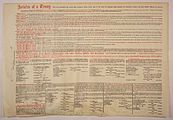Treaty rights facts for kids
Treaty rights are special rights for indigenous peoples in countries like Australia, Canada, New Zealand, and the United States. These rights come from agreements, called treaties, made with the people who settled these lands after European colonization.
Not all indigenous groups have signed treaties, and how "indigenous" is defined can be different in various places. For example, as of 2021, Australia does not have these treaties. So, the idea of treaty rights there is still being discussed for the future. But in other countries like Canada and the US, these rights are well-established by law. Many Alaska Natives and Native Americans in the United States have treaty rights, as do many First Nations in Canada. Some Inuit and Metis in Canada also have treaty rights. In Canada, a "treaty Indian" is a legal term for someone who has inherited these rights.
Treaty rights are just one type of right that indigenous peoples claim. They also believe they have a natural right to self-determination. This means they should be recognized as groups (like "tribes" or "nations") that can make their own decisions and keep their culture alive. In countries with a British legal system, once a government recognizes an indigenous group as a legal body that can make agreements, negotiations for treaties can begin.
When indigenous peoples signed treaties, they often gave up claims to large areas of land and resources. In return, they received things like:
- Special areas of land, called reservations (in the US) or reserves (in Canada).
- Protection from attacks by other groups or settlers.
- Health care (a famous example is the "medicine chest clause" in Treaty 6 in Canada).
- Education.
- Religious freedom.
- Protection of their hunting and fishing rights.
- Sometimes, money, often given out at "treaty day" ceremonies.
Some people argue that giving indigenous people treaty rights is like giving them "special rights" just because of their background. However, those who support the treaty system say that governments don't "give" these rights. Instead, Native people kept these rights for themselves when they signed treaties as equals with the government.
Contents
How Treaty Rights Began
Early treaties between European powers and indigenous peoples were often like agreements between allies. But as more Europeans settled in the Americas, treaties started to involve indigenous peoples giving up land for colonial expansion.
In 1763, the British Crown made a rule. It said that white settlers could not move past a certain line in North America. It also stated that only the Crown could buy land from indigenous peoples. This rule was later adopted by Canada and the United States. It became the reason for many treaties during the period of westward expansion.
A similar system was used in New Zealand, leading to the Treaty of Waitangi in 1840. But in Australia and British Columbia, a different idea called terra nullius was used. This idea meant that the land was considered empty, allowing settlers to take it without asking indigenous peoples.
Treaty Rights Today
In the United States, Article Six of the US Constitution says that treaties are the highest law of the land. This means that treaties are still valid today, and treaty rights are still legally binding.
In Canada, treaty rights were made a part of the law under Section 35 of the Constitution Act in 1982. This happened during a major set of constitutional changes.
Treaty Rights in the United States
Between 1778 and 1868, the United States government signed 373 treaties with different Native American groups. These treaties included peace agreements and land exchanges. Over time, many of these treaties led to court cases that helped define what "treaty rights" mean. Even today, the field of treaty rights is complex.
The main idea behind treaty rights is that Native Americans are sovereign people. This means they live under their own laws, which exist alongside US law. The challenge is balancing these two legal systems. This often requires courts to interpret the laws.
Important Court Cases in the US
Ex Parte Crow Dog
In 1883, a case called Ex Parte Crow Dog went to the Supreme Court. Crow Dog, a Native American, had killed another Native American on a reservation. He was tried in a US court and sentenced to death. Crow Dog argued that because the crime happened on a reservation, and his family had made things right according to tribal law, the US court had no right to try him. The Supreme Court agreed with Crow Dog. They said that the US court could not punish a Native American for a crime committed on a reservation against another Native American.
Williams v. Lee
As more non-Native Americans lived and worked on reservations, questions arose about tribal authority. In 1959, the Supreme Court heard the case Williams v. Lee. A non-Native American store owner on a reservation sued some Native American customers in an Arizona state court. The Supreme Court ruled that the Arizona court did not have legal power over reservations. It stated that tribes had legal power over both criminal and civil cases, even those involving non-Native Americans on the reservation.
Olyphant v. Suquamish
However, the ruling in Williams v. Lee did not last long. The Supreme Court case Olyphant v. Suquamish tried to settle the issue of tribal law applying to non-Native Americans on reservations. The Court ruled that non-Native Americans living on reservations were not subject to the decisions of tribal courts.
Treaty Rights in Canada
Treaties in Canada help define the relationship between Indigenous peoples and the Canadian Government. They also set out the rights Indigenous peoples have. These rights are recognized and protected by Section 35 of the Constitution Act, 1982.
These agreements were made between the Crown (the government) and Indigenous peoples. Indigenous nations agreed to share some of their ancestral lands. In return, they received various payments and promises. Sadly, many of these promises have been broken over the years. This has led to difficult living conditions for Indigenous peoples.
Understanding Treaties in Canada
Indigenous peoples and the Canadian government often understand treaties differently. For Indigenous peoples, what was said during the negotiations is very important. But for the Canadian government, the treaties were meant to set up the country's legal system. What was said verbally was not always written down in the treaties. This difference has caused many ongoing disputes. Many promises made to Indigenous leaders were not kept.
Canada officially recognizes 70 historic treaties signed between 1701 and 1923. It also recognizes 25 modern treaties (called comprehensive land claim agreements) signed since 1975. These treaties have given inconsistent protection for traditional ways of life. They also offer unclear participation in land and resource management. Indigenous peoples own about 600,000 square kilometers of land in Canada through these treaties.
Historic Treaties
Historic treaties promised Indigenous peoples reserve land. They also promised government-paid schools and teachers on reserves. Hunting and fishing rights on unoccupied Crown land were also included. One-time benefits like farm equipment, animals, ammunition, and clothing were also part of the agreements.
The most well-known historic treaties are the Numbered Treaties 1-11. These treaties were used to secure alliances and transfer land ownership. Different interpretations of these treaties have caused disagreements between the government and First Nation groups. Indigenous peoples often saw treaties as promises to share the land and resources, not to give up ownership. The Numbered Treaties have had long-lasting effects on First Nation peoples. They led to the creation of reserves and schools, which aimed to change Indigenous cultures and traditions.
- Presentation copies of several numbered treaties
These treaty copies are kept at the Bruce Peel Special Collections at University of Alberta Library.
Contemporary Treaties
Contemporary treaties began in 1973. This was after the Supreme Court of Canada recognized Aboriginal rights for the first time. Aboriginal rights are collective rights that Indigenous peoples have as the first inhabitants of Canada. These treaties deal with Indigenous rights to land ownership, wildlife harvesting, financial payments, and participation in land use and management. They also cover self-government.
Section 35 of the Constitution Act
Section 35 recognizes and protects the treaty rights and Aboriginal rights of Indigenous peoples in Canada. The Constitution does not list every specific Indigenous right under Section 35. However, these rights can include Aboriginal titles (rights to land), rights to use land resources, self-government rights, and cultural rights. Section 35 applies differently to each group because of their diverse cultures and traditions.
Important Court Cases in Canada
Some Indigenous rights are not clearly defined by the government. The Canadian government decided that these rights would be defined by courts on a case-by-case basis. Several important court cases have recognized Indigenous rights in Canada.
R. v. Sparrow
The case of R. v. Sparrow (1990) created a test, called "the Sparrow Test." This test helps decide if the government's actions that affect Aboriginal rights are fair and justified.
R. v. Van der Peet
R. v. Van der Peet (1996) was very important for defining Aboriginal rights under Section 35. It set up rules to decide if an Aboriginal right is protected as an "existing" right under the Canadian Constitution.
R. v. Powley
R. v. Powley (2003) was the first major Aboriginal rights case for Métis peoples. It created "the Powley Test." This test helps define Métis rights and who is legally allowed to claim those rights.
Challenges to Treaty Rights
Many Native nations have rights to hunt and fish in their traditional areas. These areas are often lands that were given up when treaties were signed. This can lead to disagreements with other hunters and fishers who are competing for the same limited resources. Things like dams and logging can also greatly affect fish and wildlife populations. In Canada, the government has a legal "duty to consult" indigenous peoples about managing these lands and rivers. In the United States, there is no such rule.
Spearfishing in Northern Wisconsin
In the 1980s and early 1990s, there were many protests in Northern Wisconsin against Ojibwe spearfishing. A court decision in 1983 confirmed that treaties from 1837 and 1842 were still valid. These treaties gave the Ojibwe the right to hunt, fish, and gather off-reservation land without state rules. This led to a strong reaction from non-Natives. They felt the Ojibwe had been given special rights. Groups like Stop Treaty Abuse (STA) led protests, which were often violent and racist. These protests happened at boat landings across northern Wisconsin. This led to a court case, Lac du Flambeau Band of Lake Superior Chippewa Indians v. Stop Treaty Abuse-Wisconsin. The judge upheld the original decision, and many people distanced themselves from the STA, which was seen as racist.
Whaling in Washington State
The right to hunt North Pacific gray whales has been a difficult issue for the Makah people in Washington state. The Makah gave up much of their traditional land in the Treaty of Neah Bay in 1855, but they kept the right to whale. The tribe stopped whaling in 1915 because there were very few gray whales left. But when the species was removed from the Federal Endangered Species List in 1993, the tribe wanted to start whaling again. In 1999, they killed one whale. This caused immediate strong reactions from environmental and animal rights groups. The International Whaling Commission (IWC) believed that the Makah tribe's limit of up to five whales a year would not harm the recovering whale population. However, because of new studies, the issue has been stuck in court since 1999. The tribe has not been able to use the right given to them in the Treaty of Neah Bay.
Dakota Access Pipeline
The Lakota people of Standing Rock reservation in North and South Dakota are concerned about the Dakota Access Pipeline (DAPL). This pipeline runs near their main water source. They believe it could pollute their water if it leaks. They also refer to the Fort Laramie Treaties of 1851 and 1868. These treaties promised the land where the DAPL runs to the Lakota people. Lands were taken in 1877 and 1887 with the Dawes Allotment Act, which broke up reservations. Some people want these treaties to be put back in place and followed today. This would mean the DAPL runs through Lakota lands.
Images for kids






